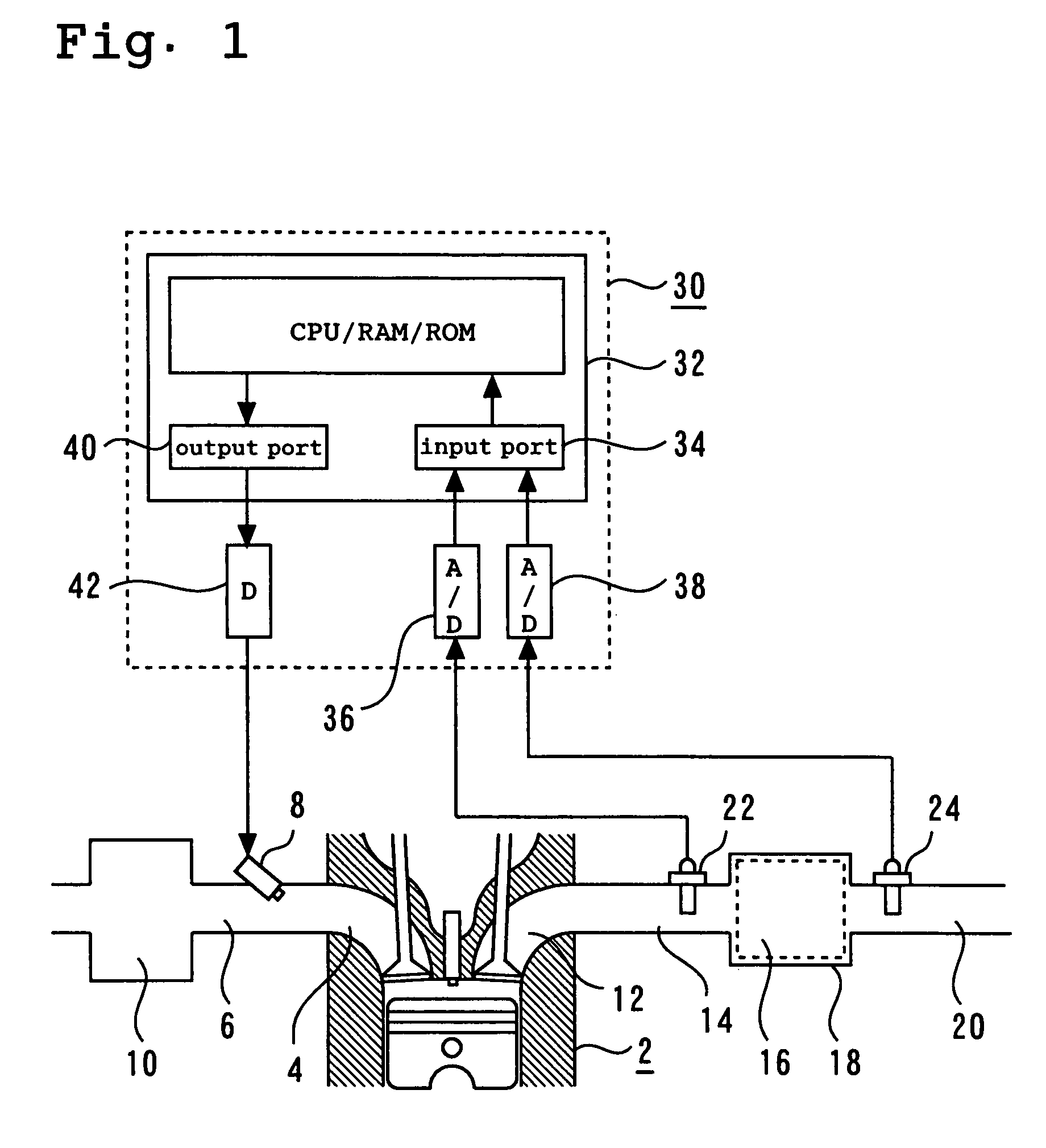Oxygen sensor and air/fuel ratio control system
a technology of air/fuel ratio and oxygen sensor, which is applied in the direction of electrical control, instruments, material electrochemical variables, etc., can solve the problems of air-fuel ratio control accuracy deterioration, error directly affecting control parameters, and inability to detect and detect errors, so as to reduce the influence of a rich gas, increase output accuracy, and high diffusion rate
- Summary
- Abstract
- Description
- Claims
- Application Information
AI Technical Summary
Benefits of technology
Problems solved by technology
Method used
Image
Examples
first embodiment
[0121]FIG. 1 is a schematic diagram illustrating a system according to a first embodiment of the present invention.
[0122]As shown in FIG. 1, the system according to the first embodiment includes an internal combustion engine 2. An intake branch pipe 6 is connected to an intake port 4 for each cylinder in the internal combustion engine 2. The intake branch pipe 6 includes a fuel injection valve 8. The intake branch pipe 6 is also connected to a common surge tank 10.
[0123]An exhaust port 12 for each cylinder in the internal combustion engine 2 is connected to a common exhaust manifold 14. The exhaust manifold 14 is connected to a catalytic converter 18 that incorporates a three-way catalyst 16. The catalytic converter 18 is connected to a muffler (not shown) via an exhaust pipe 20. An upstream sensor 22 is positioned upstream of the exhaust manifold 14, that is, upstream of the three-way catalyst 16. The upstream sensor 22 is a so-called wide-region air-fuel ratio sensor, which genera...
second embodiment
[0149]The system used in the second embodiment is configured the same as the system described in conjunction with the first embodiment. However, the control apparatus 30 stores two target voltages Vref1, Vref2 as the target voltages for calculating a deviation in accordance with the output V24 of the downstream sensor 24. FIG. 4 is a graph illustrating the relationship between the output of the downstream sensor 24 in the second embodiment and the two target voltages Vref1, Vref2.
[0150]As shown in FIG. 4, hysteresis occurs in the output characteristic of the downstream sensor 24 when the air-fuel ratio changes between rich and lean states in a low-concentration gas atmosphere. In other words, the output generated by the downstream sensor 24 when the air-fuel ratio changes from rich to lean differs from the output generated by the downstream sensor 24 when the air-fuel ratio changes from lean to rich. More specifically, when the air-fuel ratio changes from rich to lean, the sudden ou...
PUM
| Property | Measurement | Unit |
|---|---|---|
| porosity | aaaaa | aaaaa |
| thickness | aaaaa | aaaaa |
| porosity | aaaaa | aaaaa |
Abstract
Description
Claims
Application Information
 Login to View More
Login to View More - R&D
- Intellectual Property
- Life Sciences
- Materials
- Tech Scout
- Unparalleled Data Quality
- Higher Quality Content
- 60% Fewer Hallucinations
Browse by: Latest US Patents, China's latest patents, Technical Efficacy Thesaurus, Application Domain, Technology Topic, Popular Technical Reports.
© 2025 PatSnap. All rights reserved.Legal|Privacy policy|Modern Slavery Act Transparency Statement|Sitemap|About US| Contact US: help@patsnap.com



